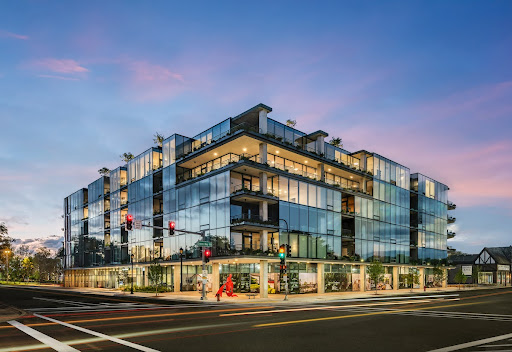From city centers to suburban communities, developers are rethinking living spaces to minimize environmental impact and enhance resident well-being. Integrating environmentally friendly features into buildings helps to create spaces that are not only energy- and water-efficient but also promote occupant health.
Current key initiatives include integrating LED lighting and occupancy sensors for energy savings, employing smart thermostats for precise temperature control, and enhancing building enclosure and insulation for improved energy efficiency, according to Alison Mills, vice president of design and development at investment firm CRG.
Water conservation measures involve installing low-flow plumbing fixtures and smart irrigation systems, while prioritizing low-VOC materials contributes to indoor air quality. Additionally, the growing popularity of electric vehicle charging systems and “EV-ready” parking spaces reflects a commitment to sustainable transportation options.
Uncovering sustainable design principles
Incorporating green design principles into multifamily housing developments that simultaneously promote sustainability and eco-friendliness while enhancing the resident experience is a core architectural principle for Optima, a design-driven real estate development firm rooted in the modernist tradition.
“Optima’s vertical landscaping system allows plants to cascade down the facades of our buildings. The exterior greenery enhances the aesthetic appeal of a community and provides numerous environmental and biophilic benefits such as improved air quality, mitigating the heat island effect, solar shading and resident privacy,” said David Hovey president & COO of Optima.
The firm’s proprietary exterior landscape system was first developed for Optima’s Arizona properties but recently made its Midwest debut at Optima Verdana, a 100-unit luxury rental community that opened in 2023 in Wilmette, Ill., on Chicago’s North Shore. The building’s exterior planters were designed with species that stay green year-round and provide opportunities for residents to connect with nature from within their homes.
CRG’s upcoming student housing project, Chapter at Madison, near the University of Wisconsin, is embracing biophilic design principles by incorporating visible green roofs instead of traditional white TPO rooftops. These roofs will showcase lush local plantings year-round, enhancing aesthetics while serving multiple environmental purposes. They mitigate climate change effects by reducing stormwater runoff, countering the heat island effect, saving energy and fostering biodiversity.

Chapter at Madison also prioritizes sustainability through LEED Silver certification efforts, leveraging water source heat pumps to exceed energy efficiency standards and reduce utility bills for residents. Recyclables are conveniently stored on-site, encouraging active participation in waste reduction, while ample bicycle facilities promote eco-friendly transportation alternatives.
In Chicago, CRG is committed to sustainable construction practices, aiming for an 80 percent diversion of construction waste to minimize landfill use, prevent soil contamination and reduce water pollution.
Optima McDowell Mountain, which is currently under construction in North Scottsdale, Ariz., will have a significant measurable positive impact on its surrounding environment. When complete, the community will feature the largest private rainwater harvesting site in the U.S. Hovey noted.
The residences are expected to use half as much water as the average Scottsdale multifamily residence and a quarter as much water as the average Scottsdale single-family home. The community will be the first project in Arizona to be built under both the new International Energy Conservation Code and International Green Construction Code.
“Integrating green and sustainable design principles into multifamily housing is not only a win-win for both the environment and the people who call these spaces home, but it also aligns with ESG priorities of investors and lenders,” Mills noted. “These stakeholders are placing growing importance on environmentally friendly business practices, which in turn safeguards the long-term value of the asset,” Mills noted.
Read more on Multi-Housing News
Visit Optima Verdana for more details

